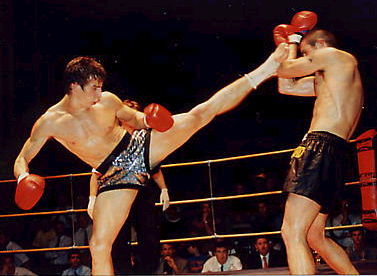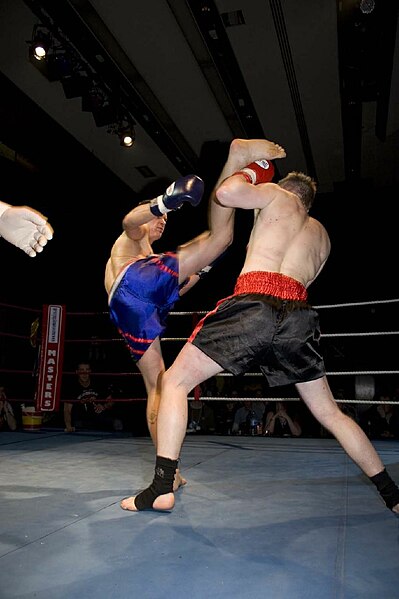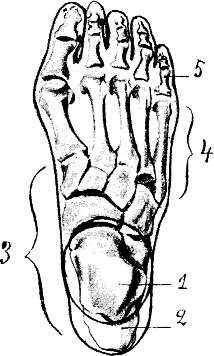While Taekwondo does not lay a basis for grappling or groundfighting, some aspects of the art can be adjusted and used from the ground, especially while on the back.
What is the importance of being able to kick from the ground? Outside of a taekwondo or non-MMA ring fight, there won't be a referee to create distance when you hit the ground. Knowing how to utilize strikes from this vulnerable position is highly important in such a situation.
There are two main positions one can take up when on the ground and your opponent is standing:
-----------------------------------------------------------------------------------------------------------------------------------
A. Demonstrated in the picture above (with the man in the red uniform at the beginning of this post). This position may seem strange or appear awkward, but is in fact a fairly comfortable position for being on the ground. With your chest turned to either side, rest on your non-dominant leg (meaning, if your right foot is better, rest on your left foot). Your entire chest should be turned one way or the other. Support your upper body with
at least one hand firmly planted below your head. Now use your dominant foot for one of three kicks: the roundkick, sidekick, or hook kick.
What are benefits of this position?
Well, this position offers incredibly powerful kicks and extended range. Your entire body can be turned into the kick quickly, resulting in high power and the possibility of turning and rolling your body away, giving you a chance to recuperate and stand up at a range. Your head is also fairly far away from your opponent and you can rotate away, protecting your head, using your hands.
What are the cons of this position?
Although there is distance between your opponent and you head, your opponent can still outmaneuver you. If this happens, you have nothing to protect yourself, as your hands are occupied supporting your body weight. Although your kicks from this position will be powerful, if you turn over too much, you are exposing your back and head, again, with no means to protect yourself. This position also cannot be held for very long and can be knocked off balance.
----------------------------------------------------------------------------------------------------------------------
B. In the picture displayed below, we see the second ground kicking position. It is basically a crunch/situp position. It can also be seen as a guard position in Jiujitsu without someone on top. This is the most common method of going on the striking offensive while on the ground.
The hands are held in front, protecting the face and sides of the body. The legs are in front, also protecting the body. It is very difficult to effectively strike a person in this position. Kicks and even punches can be used here. However, this position is very uncomfortable on a hard surface ( for example, a sidewalk) and can cause discomfort to even pain in the lower back.
What are the benefits of this position?
This position offers GREAT protection. If your opponent comes close, rapid straight kicks can be aimed at the shins, kneecaps, groin, and gut. If the opponent deals with this damage and continues to go on top of you, punches can be used. If this fails, you are now in guard position, which is considered a neutral position in grappling. Assuming you have grappling experience, you will still have a fair chance of overcoming your attacker.
What are the cons of this position?
Although it offers a great defense, it has the same flaw as the previous position, being that your opponent can outmaneuver you and attack the back of the head. This position is easy to hold for longer periods of time than the previous position, but will become uncomfortable far quicker. Your strikes will have little power, as rotation will be comparatively more difficult, and you will have to rely on almost pure core strength. This is why you will have to aim for weaker and softer areas of the body, such as the gut.
---------------------------------------------------------------------------------------------------------------------
Both methods have their ups and downs, but both should definitely be practiced. Doing so will result in a full understanding of their strengths and weaknesses and allow you to adapt should such a situation arise.
NOTE: Your opponent WILL NOT wait for you to take up your position. If not done quickly, you will get hit, as with most martial arts techniques.



















